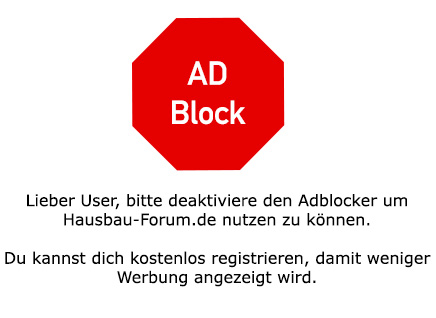11ant
2017-04-27 13:38:24
- #1
what I rather meant was that some prefabricated house manufacturers nowadays also use ecological and sustainable insulation materials. Many, on the other hand, still put Styrofoam on the outside [...] I don’t know what has changed in the last 2 years.
The eco-bio wave already caught on with prefabricated house builders twenty years ago. Back then, it was even possible to choose a different insulation material of the same thickness. Today, it would first have to be recalculated whether the desired U-value is still achieved. That’s why wall thicknesses in "eco" construction today can differ by 2 cm. The change in the last two years is that the Energy Saving Ordinance 2016 replaced the Energy Saving Ordinance 2014.
However, there are also various wars of belief about this.
These are nowadays more a consequence of this "insulation craze" and then affect "both" construction methods (timber frame prefabricated panels and masonry). There was no beating around the bush about "eco," it was requested and offered - done. Back then, insulation was only inside (in prefabricated timber frame construction, in solid construction between masonry shells). Bonding insulation panels of, to put it mildly, petrochemical provenance is a very recent (mis)development. The discussion about insulation, over-insulation, and over-over-insulation is also a bona fide war of beliefs: facts exist - on all sides - but in the minority.
For me, the advantages of a local carpentry shop prevailed. For others, it surely looks different. Everyone has to weigh that up.
That’s where the advantage of a local carpentry comes into play: with its "small series production," it can perfectly follow the customer's wish to individually design their wall structure.
I also don’t know which prefab house providers offer installation levels.
I don’t know that either - what do you mean by that anyway: does your provider install empty conduit systems?
